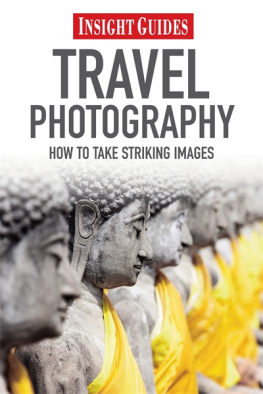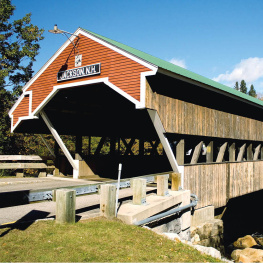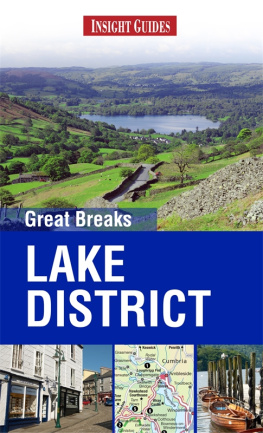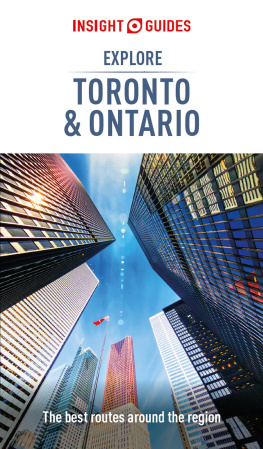About This Book
T he first Insight Guide, to Bali, pioneered the use of creative full-colour photography in travel guides in 1970. The use of strong visual images to communicate the atmosphere of a destination and the everyday life of its inhabitants have remained a hallmark of Insight Guides ever since.
Insight Guide: Travel Photography has been published to celebrate the series. The book has been designed to provide an inspirational and practical guide for all keen travelling photographers, catering to both point-and-shoot and DSLR users and providing information that even professionals will find useful. Created by experts, the lavishly illustrated guide is built around the concept of exploring various aspects of technique and giving plenty of examples.
The Past and Present section, indicated by a pink bar at the top, explores the history of travel photography and looks at the genre in the digital age and the importance of telling the story.
The Big Picture section, indicated by a blue bar, looks at the key elements of Light and Composition, before describing the Camera itself.
The main Journey section, with a green bar, provides the practical application for the technical material described in the Big Picture, covering eight main areas of travel photography including Landscapes, People and the Built Environment.
A Destination Calendar, with tips on where to go month by month.
The At Home section, with a yellow bar, looks at preparations before you go and what happens when you get back: organising, processing, sharing and selling.
The contributors
This book was commissioned and edited by Tony Halliday, a senior editor at Insight Guides London office, and a keen photographer himself. In developing the concept and pulling all the strands of the project together, he was assisted by Roger Williams, a long-standing guide book editor and author who has been involved in numerous Insight Guides. His written contributions here include the Past and Present section, the feature on The Family of Man, and the Destination Calendar.
Michael Freeman is an acclaimed photographer and author, who has produced more than 100 books, including a number of well-respected volumes on the practice of photography. A leading photographer for the Smithsonian Magazine for three decades, Freemans work has been widely published in major international magazines, as well as a large number of illustrated photographic books. Here, as well as some lovely images, he provided his expertise as consultant, on the extensive technical chapters covering Light and The Camera, the entire At Home section, as well as the chapters on Landscapes, Elements & Skyscapes, Transport and Details.
Chris Bradley has been taking photographs professionally for over 30 years. He writes and presents Travel Photography seminars, and has worked as a writer and photographer on a variety of Insight Guide projects. For this book he provided the chapters on Composition and the Built Environment.
Chris Stowers is a photographer who has travelled and worked in over 60 countries, his work appearing in major newspapers and weekly magazines. His guidebooks cover destinations as diverse as San Diego and Saigon, and for this book he penned the chapter on People photography.
Andy Belcher is an award-winning photographer known for his innovative techniques for capturing underwater, extreme sports and adventure images. He wrote the Active Pursuits chapter.
Ariadne van Zandbergen is a leading wildlife photographer based in South Africa. She wrote the Wildlife chapter, which includes her experiences photographing a leopard.
All the contributors have images in the book, as do other seasoned photographers, notably Sylvaine Poitau, Yadid Levy, Martyn Goddard, Abe Nowitz, Richard Nowitz, Peter Stuckings, Kevin Cummins, Corrie Wingate, Anna Mockford and Nick Bonetti, Glyn Genin, Britta Jaschinski and Gregory Wrona.
Contents
Introduction
History
Features
The Journey
Travel Tips
Travel Photography: Top Useful Tips
However good your photographs, they will benefit from a change of pace. The best way to achieve this is to ensure your shoot has details and close-ups that bring a different focus to your work

Lighting is important in all portraiture. The best-lit shots are achieved with side-lighting as this emphasises depth and character in the face. The objective is to add just a little light and a glint to the eye; always focus on the eyes as they are the Window to the Soul
Sylvaine Poitau/APA

When photographing crowds of people it is important to retain a centre of interest. This can be aided by isolating a single figure or group of figures, something that can be achieved by a shallow depth of field or by motion blur.
David Shen-Kai/APA

Look out for details, whether of the everyday variety such as fish at a market, or artistic, such as tiles and calligraphy. Details help to give a sense of place and they are an important part of telling the story.
Ariadne Van Zandbergen/APA

The best time to take pictures is in the so-called sweet light of the late afternoon or early morning. The warm, raking light brings out the colours, and shadows are important because they enhance texture and bring contrast of tone.
iStockphoto

When taking pictures of mountains, try to find a viewpoint that conveys a sense of scale and depth, for example by having objects in the foreground.
Andy Belcher/APA

Dusk, when there is still some natural light as well as artificial lighting, is a good time to photograph cities. A hint of blue in the sky will communicate the night-time feel much better than when the sky is black.
Kevin Cummins/APA

Every photographer needs to think about composition, and varying the shooting angle is just one way of making a picture, like the one of the market traders, more interesting. Tall buildings are usually shot from below, but focus on the shapes and textures of facades to give a strong, graphic result.
















